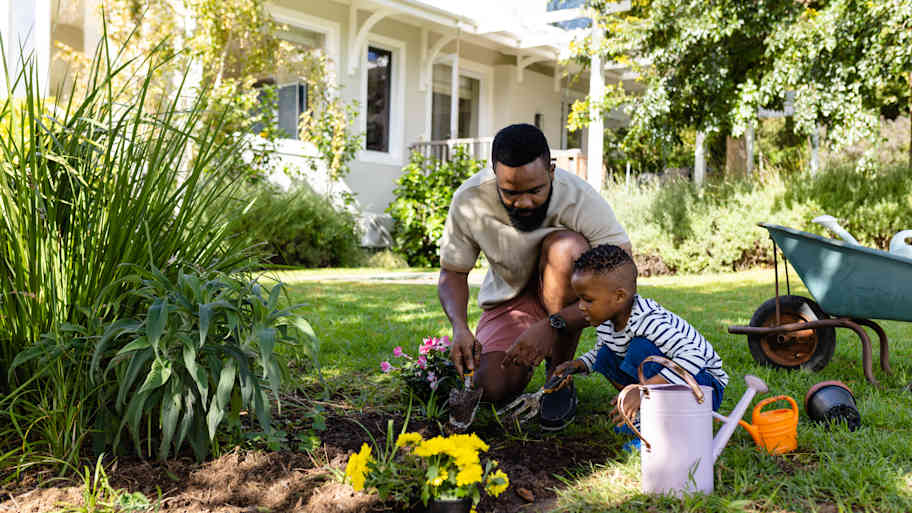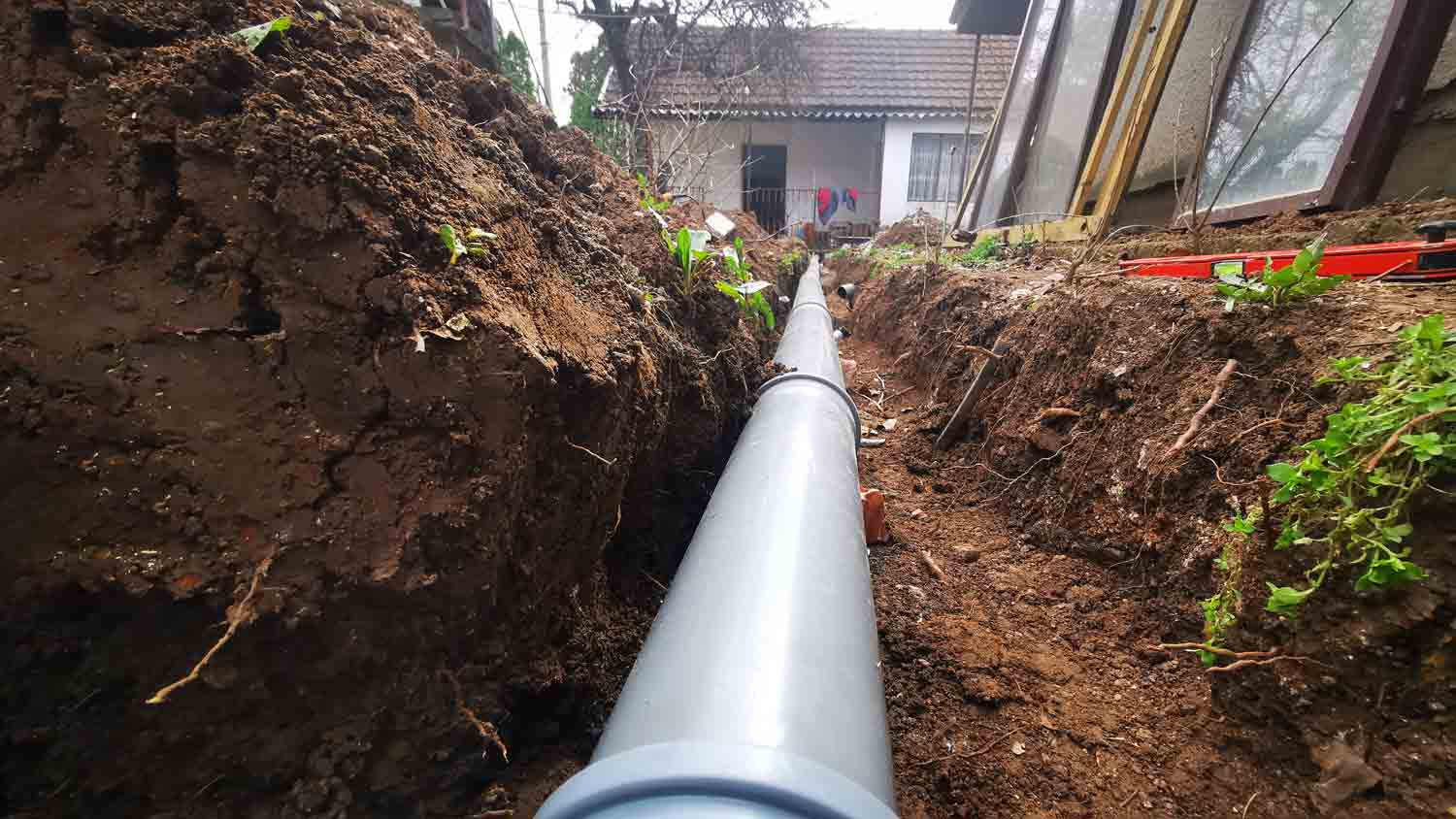
Railroad tie retaining wall costs can vary widely, so getting an accurate estimate for your needs is a good idea to set your budget appropriately.
Bring your seemingly dead grass back to life


Hiring a professional landscaper to revive dead St. Augustine grass can cost $200 to $3,500, depending on the lawn’s size and condition—but hiring a pro ensures it’s done right the first time.
DIYers often need to buy or rent equipment, and without experience, it’s easy to misapply treatments or miss early signs of disease.
A professional brings the tools and expertise to safely handle soil testing, fertilizers, and potential fungicides—saving you from extra costs and trial-and-error mistakes that could worsen the damage to your lawn or surrounding plants.
If you’re searching for a way to revive dead St. Augustine grass, you’re in the right place. This grass variety is a warm-season turf grass that you’ll commonly find along the Gulf Coast and in Southern and Central California. In warm climates, it’s shockingly resilient—with excellent tolerance against heat and humidity—but it doesn’t have the same drought tolerance and cold resistance as other warm-season perennial grasses like Zoysia grass.
In other words: if you’ve noticed brown spots on your once-green lawn, you’re hardly alone. Here’s what you can do to revive dead St. Augustine grass.
Is your St. Augustine grass browning? Even if your entire lawn turns a very crispy (read: dead-looking) shade of yellow-brown, it may not be the nail in the coffin.
St. Augustine grass goes dormant when temperatures dip below 55 degrees Fahrenheit, which causes discoloration as growth slows down. As long as you’ve continued with regular lawn maintenance, it should green up when warm weather returns.
There are several reasons why you might have dead St. Augustine grass, including:
Grass disease: This pesky disease is commonly caused by four types of fungi that weaken the roots and cause the grass to rot.
Pest infestation: Bugs, such as grub worms, feast on your grass, making it lose vital nutrients and water sources.
Overfertilization: Adding too many chemicals to your grass, such as nitrogen, can cause it to burn, which damages the roots and makes the grass develop dead spots and dark patches.
Poor quality soil: Adding soil with rocks, clay, or gravel can prevent your St. Augustine grass from receiving essential water and nutrients—inhibiting future growth and development.
There are several ways to revive dead grass to achieve a beautiful lawn. Here’s how to do it:
If you’re experiencing yellowing or thinning grass, take a look at your soil. St. Augustine grass thrives in fertile, well-draining soil that’s slightly acidic—unfortunately, not all soils are created equal. A soil test should be able to tell you what’s needed.
The cost of a soil test depends on how extensive you want to go. You can either purchase a kit from a garden center (for as little as $15) or hire a local soil testing company to perform a more extensive test (for a few hundred dollars). You may need to fertilize or add amendments that alter the pH balance of your lawn.
Just like people, grass needs oxygen and nutrients. When it’s starved, you might notice your St. Augustine grass developing brown tips that eventually spread to the whole blade. Compacted soil and thatch (the decomposing organic matter that builds up your lawn after mowing) could be to blame.
If more than ½ inch of thatch accumulates, it can prevent your grass from absorbing the right amount of water, nutrients, and oxygen. The same goes for compacted soil, where oxygen can’t freely reach the roots. To solve the problem, hire a local lawn care service to dethatch and aerate your lawn. Dethatching breaks up the thatch, and aeration breaks up compacted soil.
If you’re dealing with dead St. Augustine grass, a lawn disease might be to blame. This type of turf grass is particularly susceptible to common lawn diseases like brown patch disease, gray leaf spot, and certain types of root rot.
These fungal diseases tend to sneak in when your lawn is vulnerable and exposed to excess moisture. The treatment varies—from fungicides to dethatching and aeration—so call a professional landscaper to determine the best course of action.

In some cases, your St. Augustine grass dead spots could be caused by an insect infestation. The most common pests include:
Grub worms
Mole crickets
Chinch bugs
Ground pearls
Nematodes
Japanese beetles
European chafers
Billbugs
Armyworms
Most of these are common grass bugs and lawn pests, which you’ll need a pest control professional to eliminate. The average pest control cost runs between $200 and $600. During an infestation, grubs or other insect larvae feed on the roots of your grass, causing yellowing and browning in uniform patches. You might even catch a few hungry birds pecking at your lawn looking for a meal.
There are a few ways to get rid of pests—from insecticides and DIY bug sprays to pathogens and beneficial nematodes. Consider hiring a local lawn pest control service to clear the infestation without killing your grass.
There are a few common mistakes that may be killing your lawn, but over-fertilization is one of the quickest bad habits to curb. Excess nitrogen can damage roots and give blades a literal chemical burn. If you notice areas of scalding, there’s no miracle cure. Dead grass won’t rise from the grave, but you can prevent further damage by altering your fertilization methods.
As a general rule, fertilize St. Augustine grass every six to eight weeks, but check the directions on your fertilizer. Don’t fertilize while grass is dormant, avoid watering on very hot days, and always water after applying fertilizer.

Watering is one of the most common St. Augustine grass problems. It’s as easy to kill your lawn with overwatering as it is with underwatering. The exact amount and frequency should depend on the weather and the season.
As a general rule:
Give your lawn 1–1½ inches of water each week.
Spread the amount across one or two waterings.
In particularly hot weather, spread the amount across three waterings.
Allow the water to penetrate the soil 6 inches deep.
Water in the morning. This allows soil to dry and staves off fungus.
You may also want to consider hiring a lawn irrigation service to install a sprinkler system. Sprinklers will water your lawn evenly and help you maintain a watering schedule.
Keeping your St. Augustine grass in good, healthy condition is essential. Here are a few ways to help prevent dead St. Augustine grass:
Book an annual pest control service.
Keep vehicle and foot traffic to a minimum.
Maintain a regular watering schedule.
Regularly balance your soil pH (acidity).
Provide the grass with regular nutrients.
Identify common critters that might be tearing up your lawn.
Keep your lawn adequately mowed to prevent overgrowth.
If you’re handy and knowledgeable about lawn care, you can tackle some parts of this DIY revival yourself, such as soil testing, proper watering, fertilizing, and simple chemical interventions.
However, we recommend hiring a landscaping company near you to restore your St. Augustine grass to its former glory. Landscaping pros have the knowledge and experience to diagnose grass issues and offer the proper treatments. Landscaping typically averages $3,500, but you can expect to pay as little as $200 for simple jobs.
From average costs to expert advice, get all the answers you need to get your job done.

Railroad tie retaining wall costs can vary widely, so getting an accurate estimate for your needs is a good idea to set your budget appropriately.

We break down the cost to remove bamboo, which is slightly higher than other forms of tree removal. It's a difficult DIY task because of bamboo's hardy underground roots.

Leveling your yard can help with drainage and prevent damage to your home. Learn the cost to level a yard in Columbus, OH, and what factors can affect the price.

While similar, comparing dirt versus soil comes down to what's inside the material, its usefulness, and how it performs, depending on how you intend to use it.

It isn’t immediately obvious who to hire when you need to regrade your yard. Here are the contractors perfect for this critical home project.

Keep your yard from flooding by choosing the right piping and drainage. Learn what type of piping is used for the drainage system in a yard with this guide.